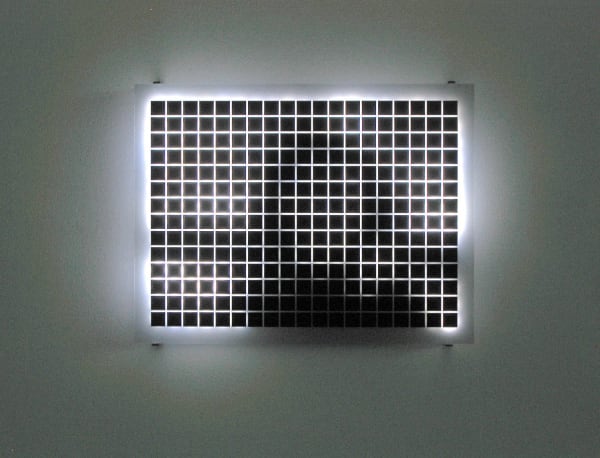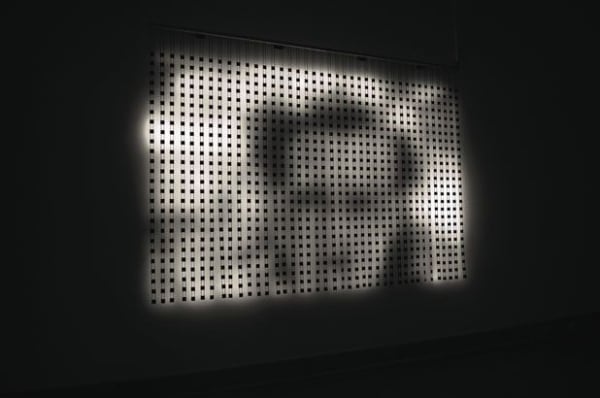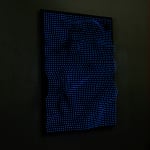Jim Campbell: Screen Obscura
Using LEDs and custom electronics, Jim Campbell constructs works that flirt with the limits of perception. In this exhibition, Campbell presents two permutations of his Home Movies series, whose source material comes from found footage of old home movies.
In addition to the perceptual challenge of low-resolution imagery typical of his work, both pieces in this exhibition involve another element of obfuscation, which paradoxically facilitates their comprehension. The home movie footage is translated via computer programming into low-resolution digital information that controls the firing and intensity of a grid of LEDs. In Home Movies 1040-1, the LEDs are individually mounted on tiny square computer chips and turned towards the wall, away from the viewer. In Home Movie Grid 2, a single panel of LEDs is covered by a sheet of Plexiglas printed with a grid of black squares.
In both works, the imagery created by the flickering LEDs is both obscured and revealed by the nature of their construction. While each light is directly blocked by a black square (or computer chip), the diffuse ‘halos’ around each square overlap and ‘blend’ the image into a coherent, perceivable whole.Home Movies 1040-1 is unique in Campbell’s Home Movies series in that it incorporates movie footage from a single family. Spanning the 1940s through the ’60s, it unfolds into a multi-generational, middle-class American epic. Home Movie Grid 2 presents a series of landscape scenes shot from the window of a moving vehicle.
In both works the film footage captures those moments that were, and still are, considered most meaningful in life – birthday parties, family vacations, holiday celebrations and the like. As our experience of each work alternates between the recognition of moving images and pure perception of changing shapes, we feel the pull of personal memories paradoxically suggested by anonymous records of the past.
Jim Campbell was born in Chicago in 1956 and lives in San Francisco. He received degrees in Mathematics and Engineering from MIT in 1978. He transitioned from filmmaking to interactive video installations in the mid-1980s and has been working with L.E.D. technology since 1999. His work is in the collections of major museums including MoMA, The Whitney Museum of American Art, and The Metropolitan Museum of Art. Campbell is the recipient of SFMOMA’s 2012 Bay Area Treasure Award. His installation Exploded Views in the atrium lobby of SFMOMA is on view through October 23.




